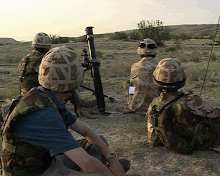Exploring the political-economic factors of participatory journalism: A first look into self-reports by online journalists and editors in ten countries.
(Vujnovic, Singer, Paulussen, Heinonen, Reich, Quandt, Hermida, Domingo).
What are the motives of journalists and editors for using UGC and citizen journalism?
- Building a community around a newspaper.
- Citizen journalism is a necessary tool for attracting and maintaining an audience.
- 'We exist if we have a lot of hits.' There is a need to encourage users to stay on the site with a variety of features. This is a survival strategy rather than a way to foster debate.
- 'Everyone is doing it - we have to do it.' There's been no thought about why journalists are doing some things with the Web. This is just a case of new tools, experimentation and the fear of not being left behind by competitors.
The Form of Reports on U.S. Newspaper Internet Sites, An Update.
(Kevin G. Barnhurst)
Taking a long historical view, U.S. journalism has become more interpretative and less denotative. Barnhurst argues that U.S. journalists have increased their influence in the United States by taking greater control of public discussion. Barnhurst looked at the websites of the New York Times (national), Chicago Tribune (regional) and Portland Oregonian (local) comparing the 2005 results with those from 2001.
Length of Stories
Between 2001 and 2005 news has got shorter rather than getting longer for the first time since the 1950s. In 2001 only 1 story out of 8 appeared on the home page. By 2005, almost half the stories appear on the front page.
Links
Links were three quarters of a page closer to the home page in the 2005 compared to 2001. A reader required less mean clicks to reach a story. But once the reader arrives at a news story there is more scrolling and screens to get through to read it, aiding traffic stats and advertising revenue.
More images and links in 2005, but external links remain rare. Barnhurst suggested this might be due to time pressures as well as a desire to keep readers on the site.
Print vs Online content
In 2001, content online was almost identical to what was printed in the paper. In 2005, only two thirds of print and online articles were the same. There was an increase in discussion forums, chat pages, and controlled feedback forms in 2005.
Stories
Barnhurst highlighted a 'sensational drift' whereby accident stories have moved closer to the front page. Stories about politics and jobs required more clicking and scrolling.
Newswork Across Europe: Some preliminary findings
(Henrik Ornebring)
Parameters of the Study
- Feb 2007 - Feb 2010
- Compares journalistic cultures of Europe: UK, Germany, Italy, Poland, Estonia, Sweden.
- Investigate the emergence of a 'European' journalism.
- Is there a dominant model of journalism in Europe? What is its effect on different national cultures?
- This presentation was based on 61 semi-structured interviews with journalists (daily news production, career stage, medium type, work situation)
- Culture defined as 'working practice' - values, communication, artifacts. What you do when you work.
- Puts journalism in the changing context of work. General deregulation of labour markets, rise of flexible employment, technologisation of the workplace, changing skill demands.
- After all, journalism is just a job for a lot of people.
- e.g. easier to do research.
- journalists equated easier with faster. For them, it doesn't mean greater depth, or improved quality, it means they can do things quicker. (Ornebring focussed on journalists who undertake daily news production.)
- As the potential of instantaneous communication increases, so too does the pressure to produce content.
- Technologisation is coming from above - blogs and other innovations are inspired by editors and employers who want to do new things.
- Role of CMS - this is also about streamlining and standardisation. Get in this technology so you can make staff cuts.
- Young journalists expect to work for free and this acts as a sorting mechanism for the industry. Journalism culture emphasises staying at work as the norm - 'if you want to go home you shouldn't be here'.
- Freelancing - tends to be a necessity rather than a choice.
- Journalists say the skills required have not changed that much. First and foremost being a good journalist means being a good storyteller.
![Reblog this post [with Zemanta]](http://img.zemanta.com/reblog_e.png?x-id=72f56b7e-bcce-4fa4-930d-2516278f2a34)

0 comments:
Post a Comment
Comments